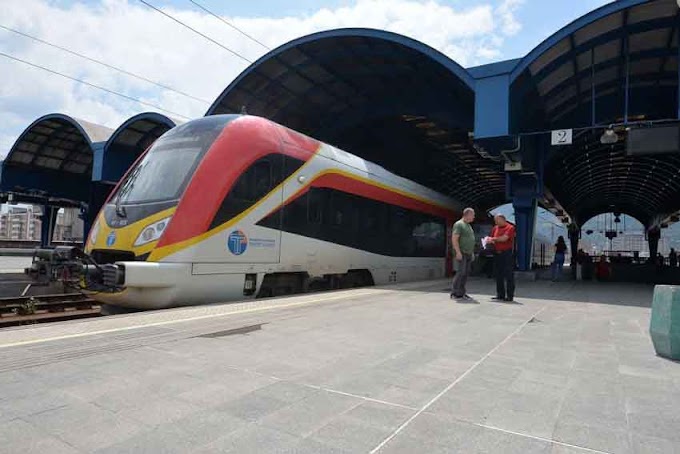The soil in the Strumica field and valley is such that whatever seed you may sow, it will give birth in abundance. That is why this region is known for the quality agricultural products, the pepper and the tomato.
The Strumica valley is surrounded by the mountains Ograzden, Belasica, Elenica, Plachkovica and Plavush. Nearly half of this Macedonian south-eastern region is covered by forests - oaks, pines, beeches, chestnut trees, black and white pines, firs, etc.
The most beautiful forests are at an altitude of 1000 to 1500 meters. And down are the fertile soils. There are 230 sunny days per year and an average temperature of 13 degrees Celsius in this region, and it is not only suitable for vacation and recreation, but for living, too. Beside the fields and the forests, there are also the waters from the mountain springs, the several artificial lakes and the river Strumica. There are also warm, curing waters which are very famous. The Bansko spa is one of the oldest known spas and the water from the Parilo spring has a temperature of 71-72 degrees throughout the year, which proves that the water surges from great depth. This place is good both for the healthy ones and for those looking to restore their health.
God’s magnificent generosity
Director Branko Stavrev, one of the most glorious experts on the Russian literature and the Slavic soul, would say that it has always been the case. The spa was there since ancient times and is one of the rare preserved monuments of its kind in Europe. It is located approximately 12 km east of Strumica, in the base of mount Belasica, in the yard of the “King Samoil” hotel. Its surface is 1000 square meters where ten rooms are uncovered with walls preserved in height from 2 to 6.7 meters. It had changing rooms, sauna, pools with hot and cold water, intimate booths and used the thermo-mineral waters from the Parilo spring, 50 meters south of the spa.
This attractive monument of the past is an exceptional space for cultural events, not just because of its setting, but also because of its acoustics. Few years ago, director Goran Trenchovski, founder of the movie festival “Aster fest” showed us films here within the festival. There were chairs in the pool and the canvas was stretched over the brick wall. As I was watching I thought to myself what it would have been like if the bath worked, if there was water in the pool and we were watching the movies naked, sat on the chairs in the pool.
It is thought that 5000 years B.C. the Paeonians lived here. Around 2500 B.C. the ancient tribe of Doberi founded the city of Dober; this is also where the Iorians formed the city of Ior and the Astrits – Astrion. Astrion was one of the eight cities of the Roman province – Second Macedonia in 181 B.C. Its name meant Star city and it was inhabited by Star people. To be honest, I find the explanation that the name was given because of the beautiful star-lit nights much simpler. The way I see it, the Star city was inhabited by the Star people who came directly from the stars. They were marked with stars on their foreheads, just like Alexander. Their skin was transparent like the waters of the nearby Paeonian Sea. Blue blood ran through their veins. Long story short, they were the first human beings to colonize the planet Earth. I imagine the first people on this planet were in the region of Strumica. So, the Garden of Eden is none other than the Garden of Strumica, and Adam and Eve were its first citizens. I think I’ve said enough.
At night is the most beautiful period
 The star nights in Strumica are a different story altogether, especially if your guide through them is a skilled guy like actor, musician, writer and showman Igor Djambazov. Few summers ago, I was a guest at “Aster fest”. Around midnight, writer Aleksandar Prokopiev and I were returning to our hotel, tired from watching movies and beautiful women all around. In front of the hotel, we ran into a “land mine”.
The star nights in Strumica are a different story altogether, especially if your guide through them is a skilled guy like actor, musician, writer and showman Igor Djambazov. Few summers ago, I was a guest at “Aster fest”. Around midnight, writer Aleksandar Prokopiev and I were returning to our hotel, tired from watching movies and beautiful women all around. In front of the hotel, we ran into a “land mine”.
“Hello birdies, let’s roll into the night life. The taxi will be here any minute.” – Igor welcomes us at the entrance, waving his hands as if they were wings. And he doesn’t accept “no” for an answer. I tried to get us an alibi by saying: “At least we could put on something warmer, we are cold.”
“Only socks will do. Be quick birdies” – he said, smiling like the sky above Strumica after a summer rain while signaling the taxi driver to wait.
And so, we went from one restaurant to another, then a café, then the disco. Only Istanbul can compare to what I lived through here. After visiting every single place, it was only right that we ended up eating burek.
On the high hill
The clouds are spawning over Strumin’s grave - The beauty that “opened” the gates of the unconquerable fortress because of love. Today, nine rows of travertine stone press her tomb, for her father cursed her because of her treason that she’d be buried and thrown out nine times.
The waters from the biggest waterfall in Macedonia, in Smolare, are making noises to tell the epic of King Samoil, his last battle at Belasica and the 14 thousand blinded soldiers in 1014. Today, at that spot is Vodocha and the marvelous monastery of Saint Leontius. There are so many churches in the region of Strumica, and this is where the oldest fresco in Macedonia was discovered.
On the other hand, the carnival in Strumica is one of the most important customs and traditions of its kind in Macedonia. It is held every year during the fast days before Easter. It has a long tradition, being mentioned as early as 1670 by traveler Evlija Chelebija. “I came to a town, spread over a high hill and saw masked people that night, running from house to house, singing, laughing and shouting…”











